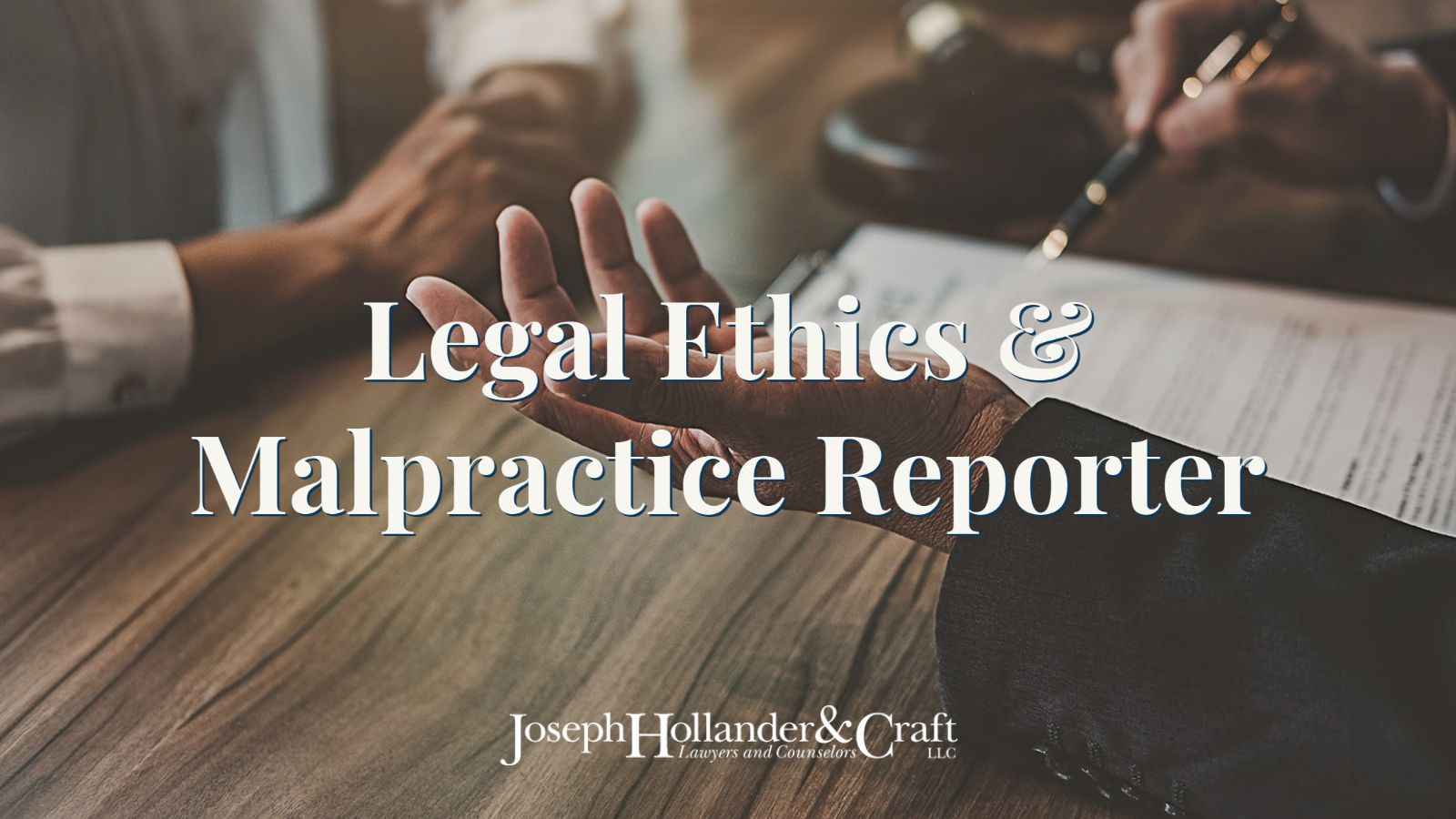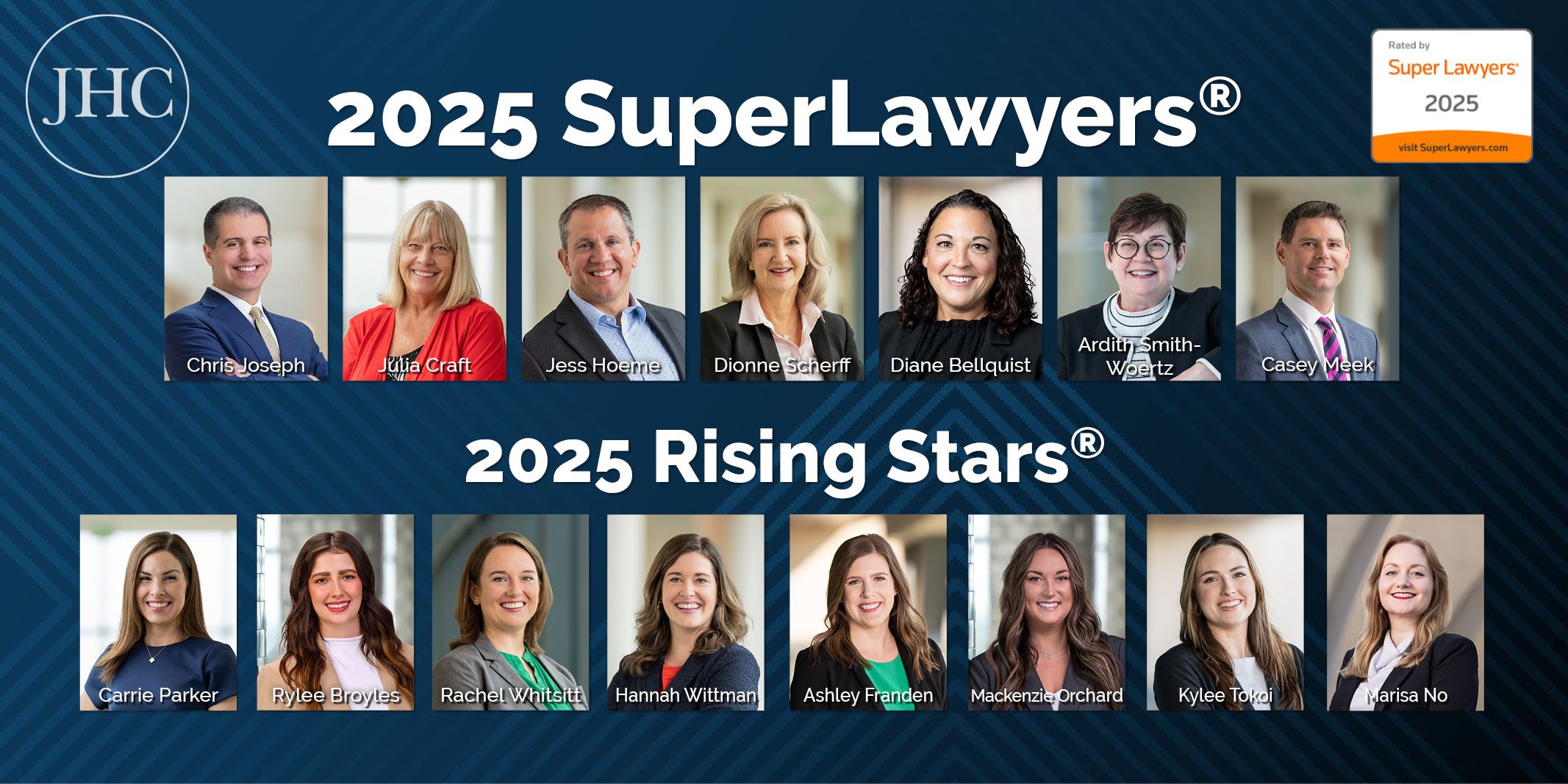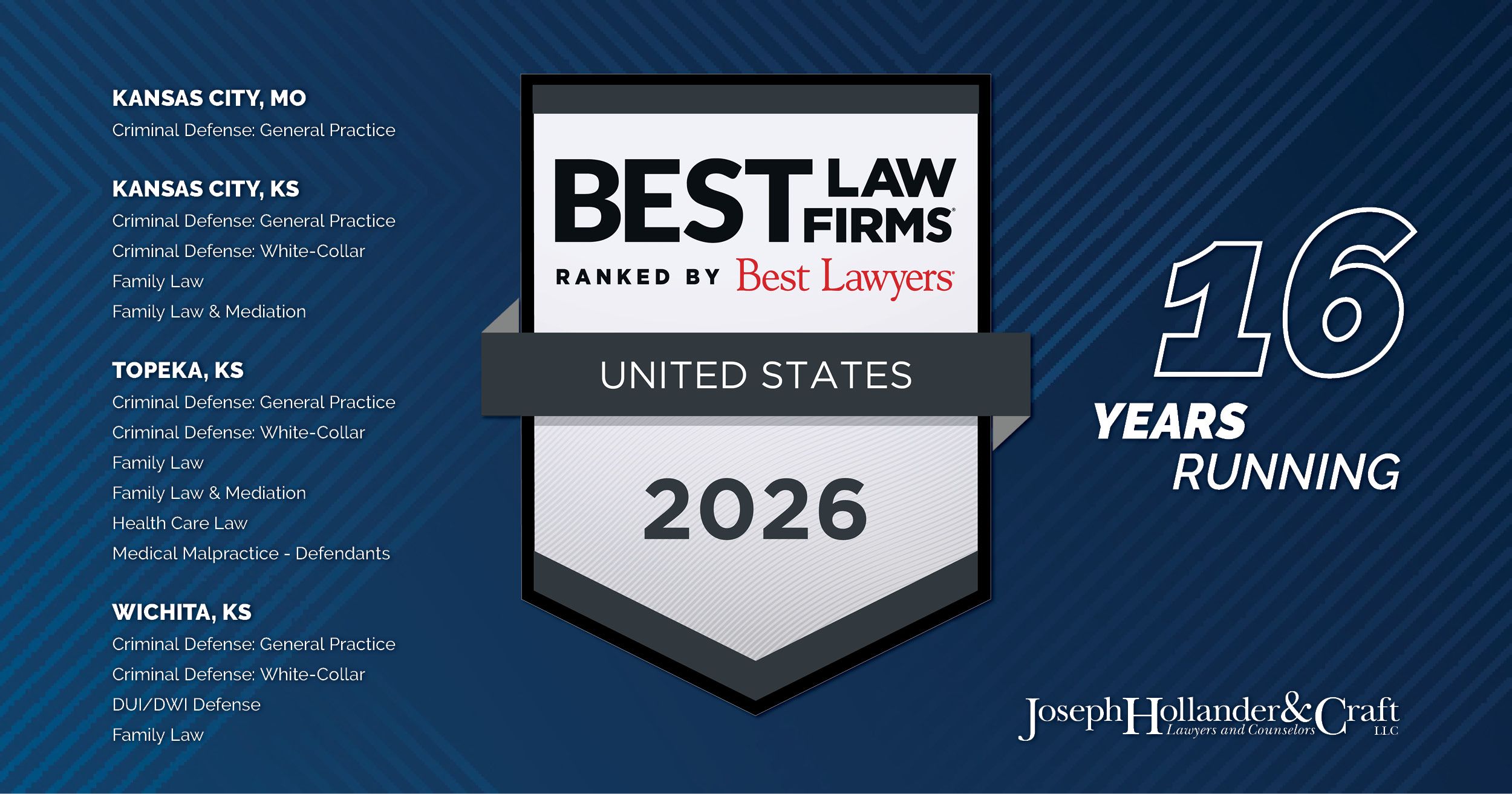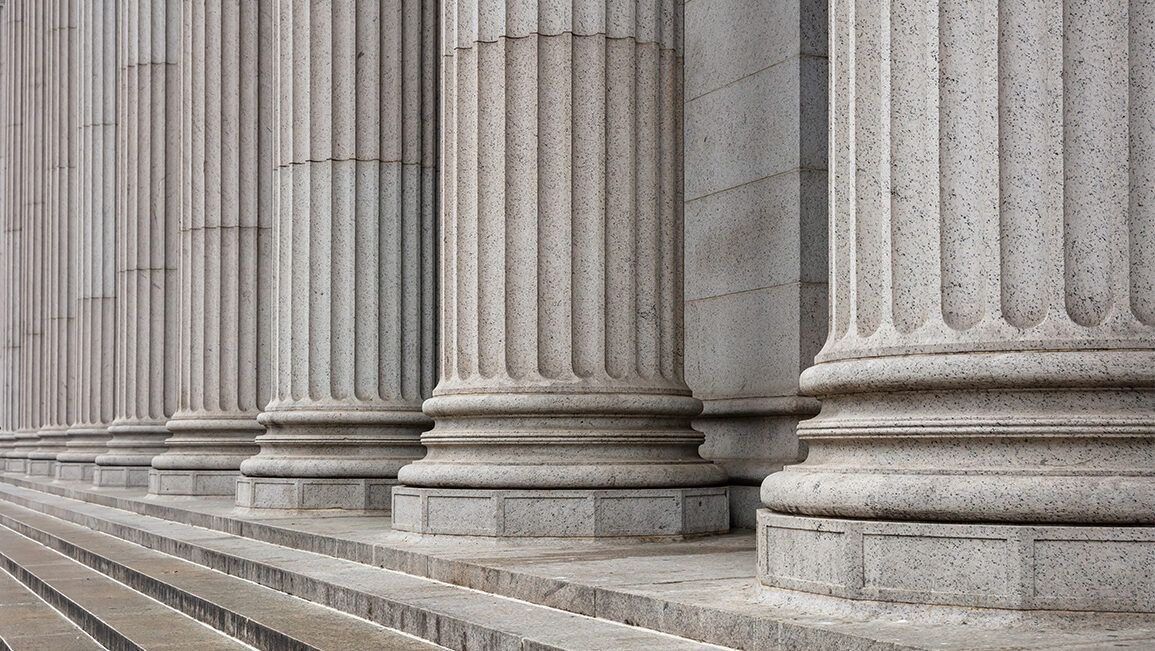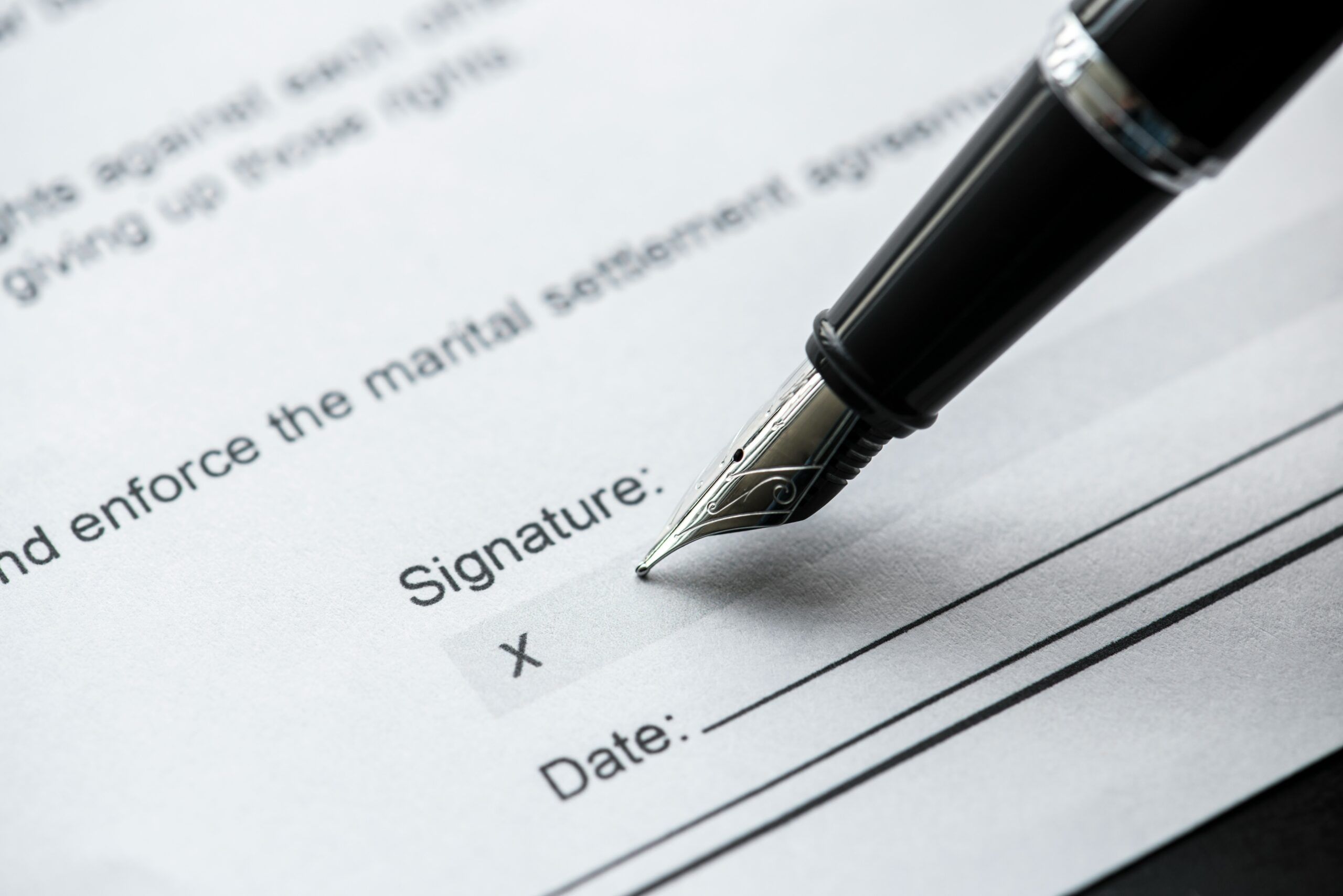Contents
- FEATURE ARTICLE: The Judicial Discipline of Judge Clark
- FORTHCOMING AUTHORITY: Judicial Commands to Remove the Masks
- BOOK REVIEW: The Anointed: New York’s White-Shoe Law Firms—How They Started, How they Grew, and How They Ran the Country
- BLAST FROM THE PAST: Excerpt: The Oath of an Attorney at Law
EDITED BY: Professor Mike Hoeflich
PUBLISHED BY: Joseph, Hollander & Craft LLC
FEATURE ARTICLE
The Judicial Discipline of Judge Clark
The Code of Judicial Conduct warns that a judge is a judge “at all times” and that his “extra-judicial” conduct may be subject to scrutiny—even discipline—if it undermines the judge’s independence, integrity, or impartiality; demeans the judicial office; demonstrates actual impropriety; or creates the appearance of impropriety. Most judges would expect these conditions to limit or prohibit their ability to engage romantic or sexual conduct and communications with litigants or attorneys who appear in their courtrooms. Likely fewer expected these conditions to limit or prohibit their romantic or sexual conduct and communications wholly unrelated to their judicial office. And yet they were in Matter of Clark, — Kan. —, No. 123,911, filed Jan. 28, 2022—despite the strong opinion of two Kansas Supreme Court justices that (1) the lawful, private, consensual sexual conduct practices at issue did not violate the Code of Judicial Conduct; and (2) any consequence for Clark’s conduct was for voters—not the court—to deliver.
Panel B of the Commission on Judicial Conduct heard Clark’s case based on facts to which the parties stipulated and found all stipulated facts were proved by clear and convincing evidence. But the panel emphasized six facts it believed were “critical” to the disposition of the case:
FORTHCOMING AUTHORITY
Judicial Commands to Remove the Masks
The Covid pandemic has now gone on for more than two years. Much of the American population is tired of the various mitigation methods that have been either required or suggested, while others remain steadfastly committed to them. For example, although many people are ready to ditch their masks, plenty still prefer to wear them. Like the rest of the population, attorneys and judges fall on various points of the spectrum regarding preferences and opinions for masking, and their varying opinions have resulted in more than one conflict over the past two years. One recent disagreement between an attorney and a judge on the United States Court of Appeals for the Fifth Circuit may soon result in guidance regarding a judge’s ethical obligations when such a situation arises.
On February 3, 2022, Gabe Roth, the executive director of the organization Fix the Court, filed a complaint against Circuit Judge Jerry Smith after Judge Smith ordered a lawyer in his court to remove his mask during oral argument. When asked to remove his mask, the lawyer, Josh Koppel, demurred. Roth’s complaint reported the following exchange:
According to the audio recording, Judge Smith said to Koppel, “Remove your mask, if you would.” Koppel responded by saying: “I prefer to leave it on,” after which Smith said, “We would prefer that you remove it, thank you…”
BOOK REVIEW
The Anointed: New York’s White-Shoe Law Firms — How They Started, How they Grew, and How They Ran the Country
This month, rather than publish a list of current articles of interest, we are providing a short review of an extremely interesting new book: Jeremiah D. Lambert and Geoffrey S. Stewart’s The Anointed, published in 2021 by Lyons Press. The subtitle of the book tells you what it is all about: “New York’s White Shoe Law Firms—How They Started, How They Grew, and How They Ran the Country.” And the authors—both successful lawyers and writers, graduates of elite law schools (Harvard and Yale) and worked at elite large law firms (Cravath; Davis Polk ; Wilmer Hale)—seem the perfect fit to write it.
The volume is a somewhat idiosyncratic history of the rise of large, elite, urban law firms, often referred to as “white shoe” firms. Unlike many academic history tomes, this volume is a good read. It is well-written and chock full of anecdotes about some of this country’s most important lawyers and law firms. In addition to telling the story of how these law firms became centers of legal practice, the book explains how these firms helped to make law practice at the elite level immensely rewarding financially and an entry point for those who sought not only riches, but power.
The histories of the elite firms that are included in this volume will probably annoy many partners, associates, and alumni of the firms discussed. For instance, in discussing the rise of the “Cravath System,” the authors write:
Cravath wanted only the best and brightest. A Phi Beta Kappa man from a good college who had become a law review editor at Harvard, Columbia, or Yale was the first choice. Colorless, narrow-minded bookworms need not apply (nor, for many years women, Jews, Blacks, and others not of WASP origins).
Other anecdotes seem almost incredible:
William O. Douglas, once a Cravath associate, recalled being with him when Moore received a telephone call from his wife that his house was on fire. “Why in Hell bother me?” Moore replied. “Call the fire department.
In many respects, this is a history of the American legal profession’s “bad old days”—of the time in the profession when large law firms, in response to their clients’ demands and their own ambitions, became firms “organized on factory principles by which is ground out standardized legal advice, documents, and services.” It is the story of the radical changes in the legal profession that took place in the “Gilded Age” and of the legal battles between great industrialists like Thomas Edison and George Westinghouse, led by lawyers like Paul Drennan Cravath, that established the framework for the development of the American legal profession in the twentieth century and today. It is a book well worth reading.
BLAST FROM THE PAST
Excerpt: The Oath of an Attorney at Law
For centuries, every lawyer has been required to swear an oath in order to be admitted to the Bar. This oath not only signifies that the new lawyer has been admitted but it also lays out the most basic obligations that a lawyer must undertake when admitted to practice. Below is one of the first recorded oaths known:
The Oath of an Attorney at Law
You shall do no falshood [sic], nor consent to any to be done in the Court, and if you know of any to be done you shall give knowledge thereof unto my Lord Chief Justice, or other his Brethren, that it may be reformed ; you shall delay no man for lucre or malice ; You shall increase no Fees, but shall be contented with the old Fees accustomed ; you shall plead no Foraign [sic] Plea, nor suffer no Foraign [sic] Suits unlawfully to hurt any man, but such as shall stand with order of the law, and your conscience ; you shall seal all such Processe [sic] as you shall sue out of the Court with the Seal thereof, and see the Kings’ Majesty, and my Lord Chief Justice discharged for the same ; ye shall not wittingly nor willingly fine, nor procure to be fined any false Suit, nor give aid, nor consent to the same, in pain to be expulsed [sic] from the Court forever; And furthermore, you shall use your self in the Office of an Attorny [sic], within the Court according to your Learning and discretion ; so help you God, &c.
From: The Book of Oaths and the Several Forms Thereof, Both Ancient and Modern (London, 1686)
About LEMR
The Legal Ethics & Malpractice Reporter (LEMR) is a monthly publication covering current developments in ethics and malpractice law. This popular, free publication, with close to 8,000 current subscribers, was envisioned by KU Law professor Mike Hoeflich, who serves as the publication’s editor in chief. In partnership with Professor Hoeflich, JHC’s legal ethics and malpractice group is pleased to publish this monthly online periodical to help attorneys better understand the evolving landscape of legal ethics, professional responsibility, and malpractice.
Get LEMR delivered to your inbox!
Make sure you don’t miss an issue of the Legal Ethics & Malpractice Reporter. Subscribe to our email list below to get a notification and digest of each edition as it is released.
About Joseph, Hollander & Craft LLC
Joseph, Hollander & Craft is a premier law firm representing criminal, civil and family law clients throughout Kansas and Missouri. When your business, your freedom, your property, or your career is at stake, you want the attorney standing beside you to be skilled, prepared, and relentless. From our offices in Kansas City, Lawrence, Overland Park, Topeka and Wichita, our team of 20+ attorneys has you covered. We defend against life-changing criminal prosecutions. We protect children and property in divorce cases. We pursue relief for victims of trucking collisions and those who have suffered traumatic brain injuries due to the negligence of others. We fight allegations of professional misconduct against doctors, nurses, judges, attorneys, accountants, real estate agents and others. And we represent healthcare professionals and hospitals in civil litigation.







